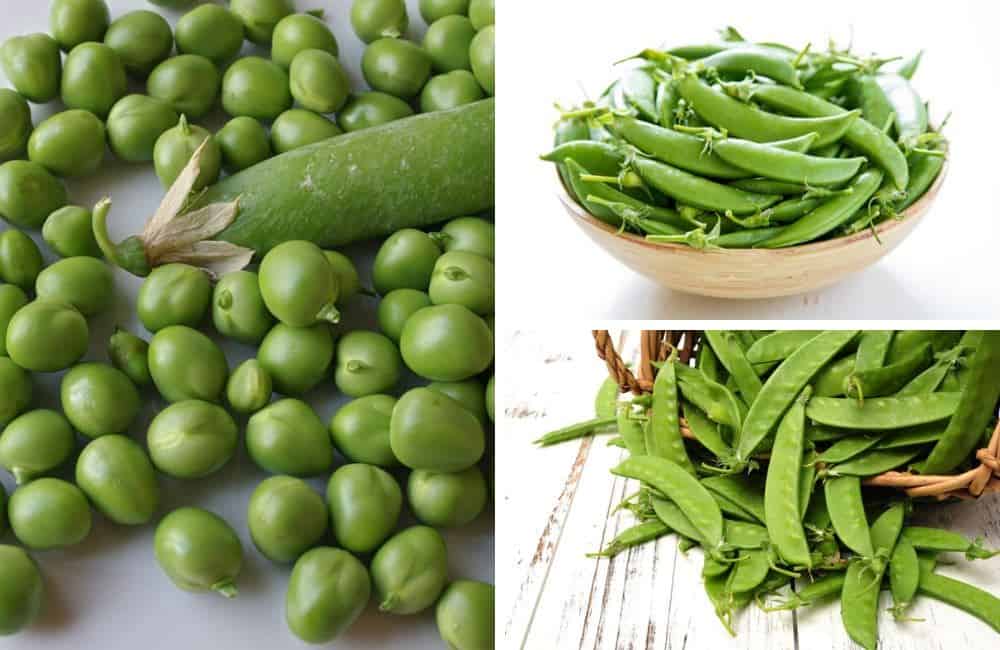What's the Difference Between Green Peas, Snow Peas, and Sugar Snap Peas?
TEXARKANA, Ark. –
They are all climbing plants and members of the legume family and they are easily grown in containers or in a small space. Let’s learn a little more about each.
Garden peas are sometimes called sweet peas or English peas. The pods are firm and rounded, but you must shell them, remove the peas inside, then discard the pods before eating. The peas are sweet and may be eaten raw or cooked; these are the peas you typically see canned or in the freezer section. They are also more commonly found in farmers markets; you may start looking for them at local farmers markets in the spring.
When should I pick my peas?
Peas are of best quality when they are immature and fully expanded, but not hard and starchy. Peas should be cooked soon after being picked because their quality, like that of sweet corn, deteriorates rapidly.
Very small green peas are known as petite pois. They are not a variety of pea but merely green peas that have been picked before full maturity.
What vitamins are in garden peas?
Garden Peas are a source of vitamins A and C, antioxidants that may reduce your risk of heart disease and certain cancers. Vitamin A helps maintain eye health while Vitamin C helps protect skin from bruising, helps heal cuts and keeps gums healthy. Eating foods with vitamin C helps the body absorb iron, which helps your body fight fatigue.
Peas also provide potassium, vitamin K, magnesium, and fiber. Potassium helps maintain healthy blood pressure, vitamin K and magnesium help build and maintain strong bones, and fiber helps control cholesterol and keeps your regular.
Peas are also a source of folate, which may reduce your risk of heart disease. Eating foods with folate before pregnancy helps lower the risk of delivering a baby with neural tube defects.
Snow Peas vs. Snap Peas
Snow peas are also known as Chinese pea pods since it is believed they originated from Southwest Asia. They are flat with very small peas inside. In fact, they are harvested before the peas have fully developed in the pod. The whole pod is edible, although the tough strings along the edges are usually removed before eating.
Snow peas are mildly flavored and can be served raw or cooked. These peas are often used in stir-fries. They have a flatter pod than sugar snap peas and are found in the freezer section or fresh at Farmers Markets.
Snap peas are also known as sugar snap peas and are a cross between snow peas and garden peas. The whole pod is eaten and has a crunchy texture and very sweet flavor. Snap peas may be eaten raw or cooked. Like snow peas, there may be tough strings at the seams of the pods that need to be removed before being eaten, but stringless varieties are now available.
Sugar snap peas are a cross between snow and garden peas. The pods of snow peas are flatter with small, premature peas, whereas sugar snap peas are more rounded. Both have an identical nutritional profile and very similar flavors although sugar snap peas tend to be sweeter and more flavorful. Look for snap peas in the freezer section or at local farmers markets.
What's the best way to eat snow and snap peas?
 Snow and snap make great additions to various salads. They can also be fried, stir-fried,
or steamed and mixed with ornamental vegetables as a great way to boost your vegetable
intake.
Snow and snap make great additions to various salads. They can also be fried, stir-fried,
or steamed and mixed with ornamental vegetables as a great way to boost your vegetable
intake.
Both types can be roasted with olive oil, lightly sauteed with garlic, or steamed as a side dish. Don’t overcook these legumes or you will get limp peas which lose their crispness.
Snow and snap peas pods can be stored in a plastic bag in the refrigerator for two weeks. They deteriorate only slightly in quality when stored.
Roasted Sugar Snap Peas
- 1/2 pound sugar snap peas, fresh or frozen
- 1 tablespoon olive oil
- 1 tablespoon chopped shallots
- 1 teaspoon chopped fresh thyme
- salt to taste
- Preheat oven to 450 degrees F.
- Remove and discard stem and string from each pod.
- Spread sugar snap peas in a single layer on a medium baking sheet, and brush with olive oil.
- Sprinkle with shallots, thyme, and kosher salt.
- Bake 6 to 8 minutes in the preheated oven, until tender but firm.
Tip: If you don’t have shallots, substitute two tablespoons finely chopped onions and 2 garlic cloves, minced.
Snow and Snap Pea Nutrition
Sugar snap peas and snow peas share identical nutritional profiles and are less starchy than a typical shelled pea.
Due to their vitamin C, vitamin K, and fiber content, they both offer various health benefits, including:
- reduced heart disease risk
- improved blood pressure control
- gut health,
- weight loss
They’re also low in calories and provide many nutrients, including fiber, vitamin C, vitamin K and folate.
For more information check out our Arkansas Food and Nutrition Resources
and download our Beans and Peas Recipes
Interested in growing peas?
Download our English Peas Home Gardening Guide or to receive a printed copy of this article and recipe, contact the Miller County Extension Office, 870-779-3609.
By Carla Due
Former Miller County Extension Agent - FCS
The Cooperative Extension Service
U of A System Division of Agriculture
Miller County Cooperative Extension Service
400 Laurel Street, Suite 215 Texarkana AR 71854
(870) 779-3609
cdue@uada.edu
Looking for more inspiration?
Check out our
The Arkansas Cooperative Extension Service is an equal opportunity institution. If
you require a reasonable accommodation to participate or need materials in another
format, please contact your County Extension office (or other appropriate office)
as soon as possible. Dial 711 for Arkansas Relay.
Pursuant to 7 CFR § 15.3, the University of Arkansas System Division of Agriculture
offers all its Extension and Research programs and services (including employment)
without regard to race, color, sex, national origin, religion, age, disability, marital
or veteran status, genetic information, sexual preference, pregnancy or any other
legally protected status, and is an equal opportunity institution.
